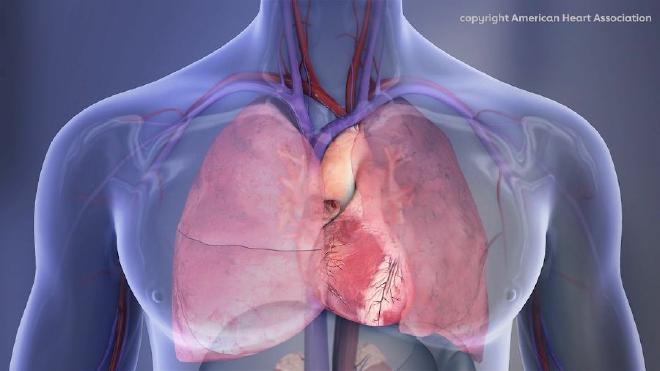

The statement, “Role of Circadian Health in Cardiometabolic Health and Disease Risk,” outlines how disruptions to circadian rhythm may increase the risk of cardiovascular disease and health risk factors including obesity, Type 2 diabetes and high blood pressure. Additionally, circadian disruption may be particularly relevant to cardiovascular–kidney–metabolic health, which is associated with cardiovascular disease incidence and mortality risk.
Circadian rhythms are approximately 24-hour cycles in physiological processes that regulate key functions such as heart rate, blood pressure, metabolism and hormone secretion such as cortisol, important for stress response and metabolism. The statement defines circadian health as the optimal function, rhythmical character and alignment of the circadian system with the light–dark cycle. The circadian system is synchronized primarily though light detected by the retina in the eye and transmitted to the suprachiasmatic nucleus (special neurons in the brain’s hypothalamus region). Inside these neurons and throughout the body are special genes and proteins (like CLOCK, BMAL1, PER and CRY) that help generate rhythmic activity. They turn on and off in a regular cycle, creating the rhythm of the body’s internal clock.
Knutson, who specializes in sleep and circadian research specifically focused on associations with cardiometabolic and cognitive health, noted, “although circadian rhythms play an important role in keeping us healthy, they are often overlooked in everyday medical care. It’s important to realize what these disruptions can do to our body and how to lessen any impact.”
Key Takeaways: #
-
Sleep timing regularity is as important as sleep duration: Irregular sleep schedules, even with adequate sleep length, can disrupt circadian rhythms. “Social jet lag” or variations in sleep schedule on work or school days vs. free days has been linked to a risk of obesity/overweight. The timing and regularity of sleep also play a role in diabetes, with social jet lag and greater day-to-day variability in sleep duration and timing emerging as risk factors for glycemic dysregulation and Type 2 diabetes. Maintaining consistent sleep and wake times helps synchronize the body’s internal clock and supports metabolic health. Sleep is one of the key measures for improving and maintaining heart and brain health in the [Association’s Life’s Essential 8](Life’s Essential 8)TM.
-
Light exposure timing is a therapeutic tool: Light is the primary cue or synchronizer for the central circadian clock in the brain. Morning exposure to natural light helps reinforce healthy rhythms, while exposure to artificial light at night—especially blue light from screens—can suppress melatonin and delay sleep onset. Even low levels of nighttime light have been associated with increased risk of cardiovascular disease.
-
Meal timing affects metabolic health beyond caloric content: Eating late at night or having irregular mealtimes can misalign the circadian clocks found in organs like the liver and pancreas, contributing to blood sugar spikes or dips and weight gain. Studies show that eating earlier in the day, such as having breakfast before 8:00 a.m., is associated with lower risk of Type 2 diabetes and better cardiometabolic outcomes.
-
Physical activity timing may enhance circadian health: Exercise acts as a secondary synchronizer. Morning or afternoon workouts can help advance circadian rhythms, while evening exercise may delay them. The timing of physical activity may also influence outcomes like blood pressure, glucose (blood sugar) control and sleep quality, though more research is needed to determine optimal timing for different individuals.
-
Circadian misalignment is amplified by shift work, light pollution and inconsistent sleep: Individuals working nontraditional schedules, such as shift workers, may face increased exposure to light pollution, irregular mealtimes and inconsistent sleep patterns compared to those who have more traditional day/night schedules. Misalignment from rotating and night shift work is an established cardiovascular disease risk factor.
-
Individual internal clock timing should guide timing of interventions: Chronotype, a person’s internal timing for sleep and activity, commonly described as “morning person” or “night owl,” affects how individuals respond to light, meals and exercise. Tailoring interventions to a person’s natural timing may improve effectiveness and support circadian alignment. However, assessing true circadian rhythms is challenging.
“Everyone has an internal clock, and it’s time we start listening to it,” Knutson said. “Simple changes, like going to bed and waking up at the same time every day, eating meals earlier and getting morning sunlight, may make a meaningful difference in your heart and metabolic health. We still need more research to establish causality and understand how and why circadian rhythms affect health. Ideally, such research may help scientists figure out the best times for healthy habits like sleeping, exercising and eating, and create personalized strategies that match people’s natural body clocks.”
Citation #
- The study Role of Circadian Health in Cardiometabolic Health and Disease Risk: A Scientific Statement From the American Heart Association was published in AHS’ journal Circulation. Authors: Kristen L. Knutson, PhD, FAHA, Chair, Debra D. Dixon, MD, MS, Michael A. Grandner, PhD, MTR, FAHA, Chandra L. Jackson, PhD, MS, Christopher E. Kline, PhD, FAHA, Lisa Maher, DNP, Nour Makarem, PhD, FAHA, Tami A. Martino, PhD, Marie-Pierre St-Onge, PhD, FAHA, and Dayna A. Johnson, PhD, MPH, FAHA, Vice Chair on behalf of the American Heart Association Council on Lifestyle and Cardiometabolic Health; Council on Cardiovascular and Stroke Nursing; Council on Clinical Cardiology; and Council on Lifelong Congenital Heart Disease and Heart Health in the Young
Contact [Notaspampeanas](mailto: notaspampeanas@gmail.com)

